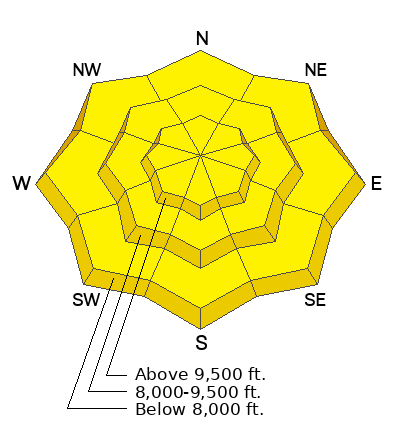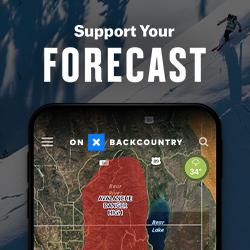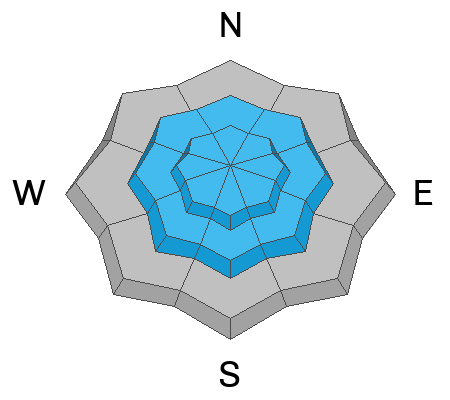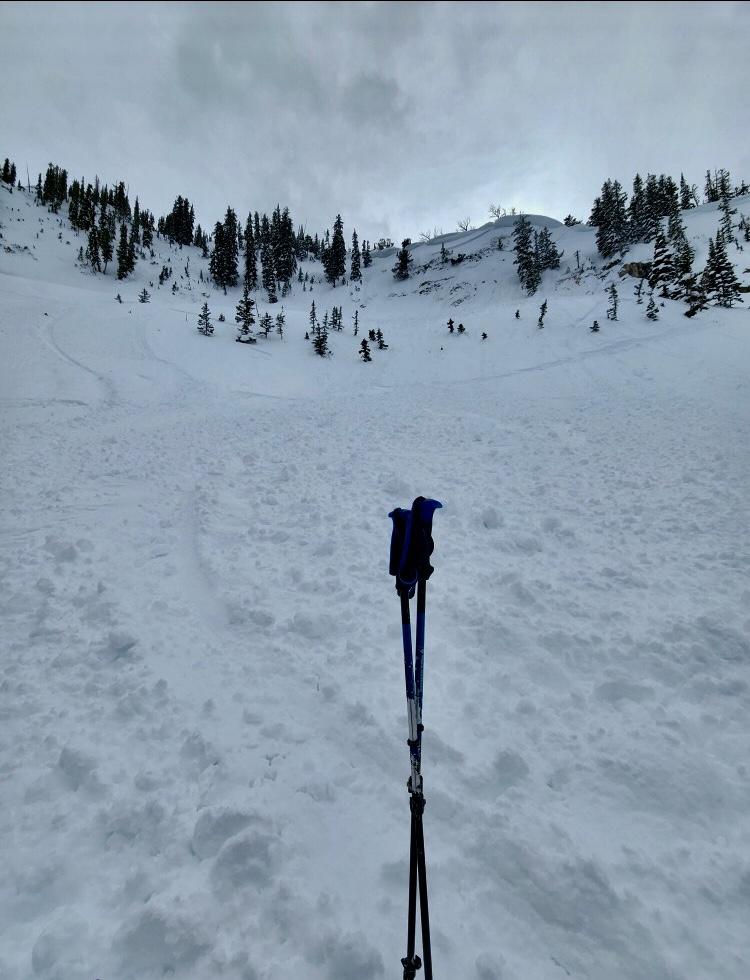Support the UAC website backend platform to ensure the ongoing security of the website and the data stored on the site rebuild by
donating to our spring campaign. Currently, under overcast skies we have had 1"-2" new snow with .10"-.20" water overnight. Trail-head temperatures are in the low-mid 30's °F. Winds at the 8,000' ridge-lines are blowing from the southwest in the low 20's gusting to the 40's MPH.
Today, skies will be overcast, temperatures should be 37-40°F, with winds blowing from the south-southwest 20 gusting to 30 MPH at the lower ridge-lines and 35 gusting to 45 MPH at the highest ridge-lines. Look for 2"-4" of snow with .30"-.55" of water. The freezing level will hover around 7,000' and we could see mixed precipitation below this elevation with a 10% chance of lightning.
Our partners at the National Weather Service have issued a
Winter Weather Advisory from now until 600PM on Saturday March 30th; read the forecast discussion
HERE.
Yesterday, we had no reports from the Provo Area Mountains. Just north of Provo in the Salt Lake Forecast Zone we observed small dry loose avalanches on all aspects and
small skier triggered avalanches on east facing slopes running on small grained facets on top of a melt freeze crust and snow safety teams at local resorts reported dry loose avalanches in the morning with wet loose avalanches in the afternoon. There was a report of a cornice triggered avalanche 1'-3' deep in the
Dog Lake Chutes area.
With yesterday's warm spring sun, the snow surface took heat on all aspects and elevations and there is a crust under the newest snow on east-south-west facing aspects.
Check out all avalanches and observations
HERE.
Video from Aspen Grove of a rider triggered avalanche on an east facing slope at 8,200' from March 28th (video: Brandon).








